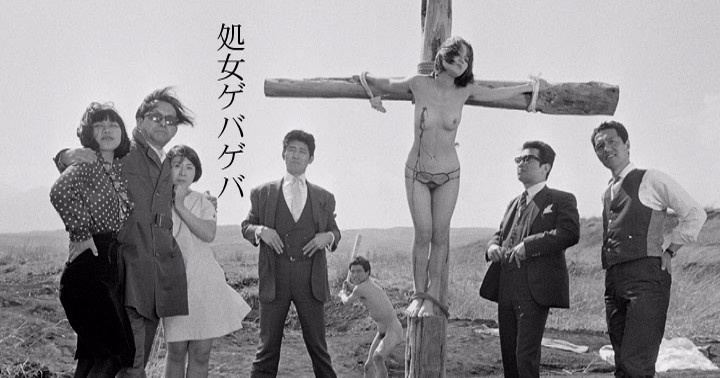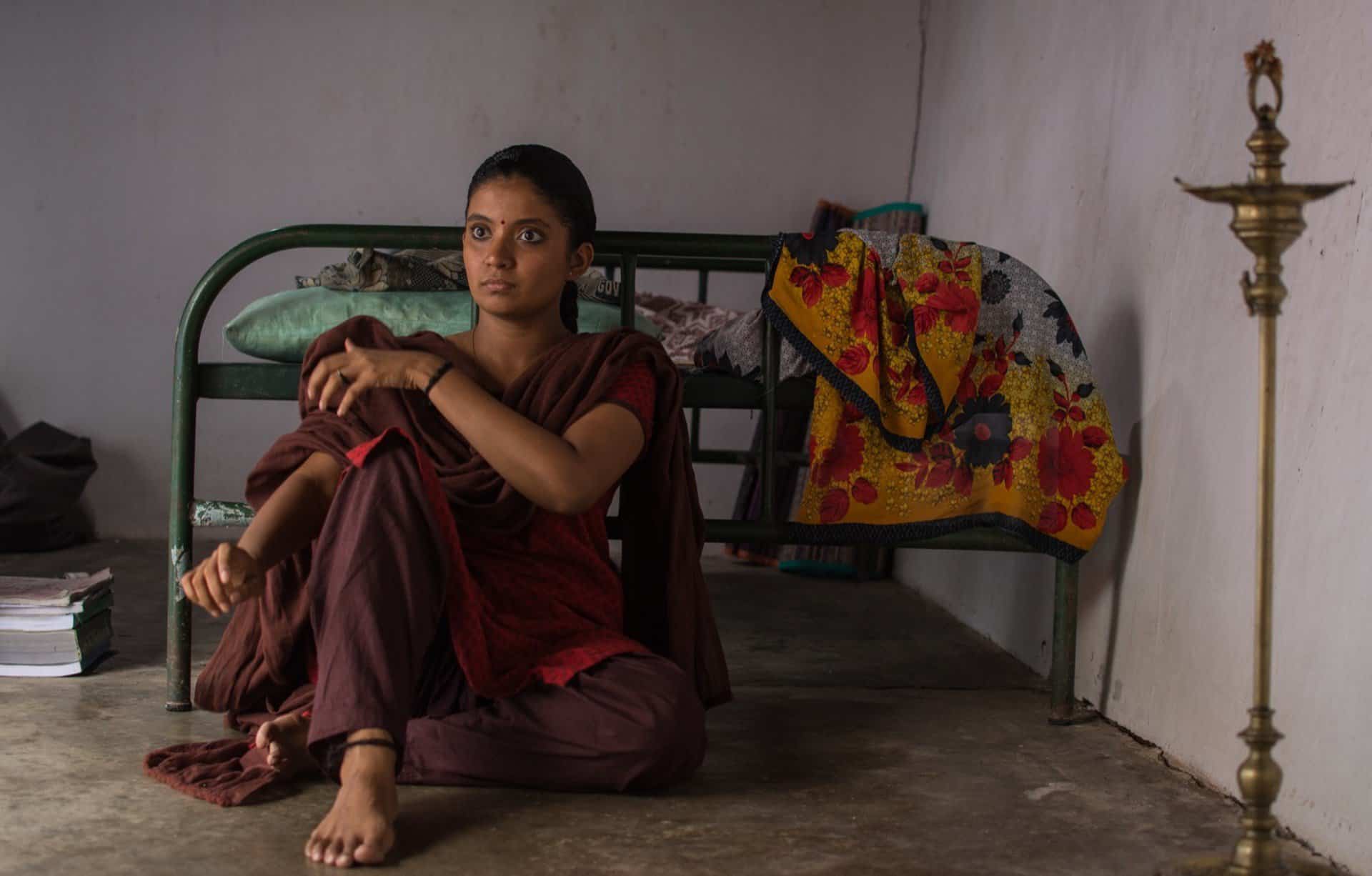Shot at the wastelands near the city of Gotemba, at the foot of Mount Fuji, “Violent Virgin” was conceived by Wakamatsu while he was producing Masao Adachi's “High School Girl Guerilla”, and shared casts and crew with it. Atsushi Yamatoya came up with a script in three days, Nagisa Oshima came with the title (“shojo geba geba”), while the miniscule budget (even for Wakamatsu's standards) is obvious in its bareness in almost all aspects, in a film that is distinctly exploitative.
Buy This Title
The rather basic script has a group of yakuza and their “girls” coming together in a wasteland-like area to lynch Hana, the unfaithful mistress of the boss, and her lover Hoshi, a low-level yakuza. Initially, the lovers are tied together and blindfolded, with them even starting to caress each other erotically despite their situation, but soon they are split, with the girl getting tied up on a wooden cross with only her underwear on, and the man subjected to various humiliations. Eventually, Hoshi is placed in a tent and one of the women of the company proceeds on having sex with him, only to be strangled a bit later before he manages to escape. Soon, however, he is caught again as he is running naked in the fields, but the presence of sniper rifle changes the dynamics once more. The appearance of more hard-core yakuza intensifies the violence.

The sociophilosophical comments about the era and the sense of disorientation many people experienced (including the movie industry) are presented through metaphors, but are quite obvious. The same applies to the effort to shock and provoke, with the way the symbol of the cross is used to torture and humiliate an almost completely nude woman, borders on the blasphemous. Furthermore, and in a rather unusual portrayal of women, the female protagonists seem to derive pleasure from just the physical aspect of sex, while being equally perverse and prone for violence as their male counterparts, in a rather extreme equalization of the two sexes.

Apart from these contextual elements, however, the narrative is based on a triptych of nonsense, soft-porn and exploitation of episodic nature, and looks more like a collage of different extreme scenes than something compact. The sole central element that connects everything together though is Hoshi, with the transformation Atsushi Yamatoya exhibits, from victim, to escapee, to killer, to blood-drinking demon, to shooter and torturer being rather impressive, in a rather demanding physically role, that had him running around naked or in women's clothes for the majority of the movie.
The voyeuristic approach, which was also evident in “Violence Without a Cause” is also here once more, although, this time, through a whole different prism, that of the scope of the sniper rifle, in a rather intriguing trick that connects the voyeurism with violence. Eri Ashikawa as Hana is on the receiving end of both, still managing to appear beautiful and sensual even in the most appalling scenes. Hideo Ito's once more excellent cinematography finds its apogee in these shots, and also in the overall presentation of the area, which could only be described as distinctly post-apocalyptic. Lastly, the dream-sequences of Hoshi, which are the only sequences in color, add to the overall nonsensical essence of the film.
Lastly, the scenes where the exploitation turns to violent action are quite impressive, in both the way they are acted (probably featuring much improvisation) and shot, with editor Tamotsu Taga's frequent cuts giving them a rather fitting sense of franticness.
“Violent Virgin” does not offer any solutions or explanations, but definitely succeeds as an original exploitation film, that does not fail, however, to show the cinematic prowess of Wakamatsy and his crew.
















